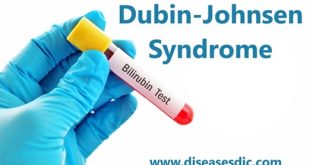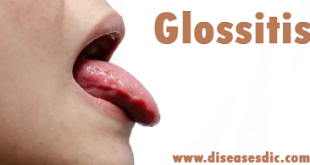Description
Dercum’s disease is an extremely rare disorder characterized by multiple, painful growths consisting of fatty tissue (lipomas). These growths mainly occur on the trunk, the upper arms and upper legs and are found just below the skin (subcutaneously). Pain associated with Dercum’s disease can often be severe. Pain may be caused by these growths pressing on nearby nerves. Dercum’s disease mainly occurs in adults and more women are affected than men. In some cases, affected individuals may also experience weight gain, depression, lethargy, and/or confusion. The exact cause of Dercum’s disease is unknown.
Types of dercum’s disease
Type I: This type of Dercum’s Disease or Adiposis Dolorosa is characterized by widespread occurrence of painful lipomas in a diffused manner.
Type II: This type of Dercum’s Disease or Adiposis Dolorosa marks the presence of nodular lipomas with severe pain.
Type III: It is also a nodular type but the occurrence is localized to a specific part of the body.
Type IV: It is marked by the occurrence of lipomas near the joints especially in knees and hip regions.
Epidemiology
Dercum’s disease affects females more often than males with some reports citing the disease is as 20 times more common in women. Dercum’s disease can affect individuals of any age. The majority of cases are women between the ages of 45-60, especially overweight, postmenopausal women. Although an extremely rare occurrence, it has been reported in children. The prevalence of Dercum’s disease is unknown. The disorder is underdiagnosed, making it difficult to determine its true frequency in the general population.
Risk factors of dercum’s disease
The factors that pose a risk for Dercum’s Disease or Adiposis Dolorosa are:
- Presence of obesity post menopause.
- Age between late thirties to late fifties.
- Presence of prior disorders like Cowden syndrome, Gardener’s syndrome, etc.
- Familial history of lipomas.
Causes
The underlying cause of adiposis dolorosa remains unknown. Possible causes have been suggested, but none have been confirmed. These have included long-term treatment with high-dose corticosteroids; endocrine system abnormalities; nervous system dysfunction; mechanical pressure on nerves, adipose tissue dysfunction; trauma; and changes in fatty acid or carbohydrate metabolism. Researchers have also suggested that it could be an autoimmune disorder.
Because the condition has rarely occurred in more than one person within a family, it may have a genetic component. However, no specific gene known to be associated with the condition has been identified.
The origin of the pain associated with the condition is also poorly understood. It is thought that fatty deposits cause nerve compression, resulting in weakness and pain.
Symptoms of dercum’s disease
The condition mainly occurs in adults and is more common in women than in men. The symptoms of adiposis dolorosa can vary significantly, and not all people have all symptoms. Symptoms that have been widely described include:
- painful lipomas
- fatigue
- memory disturbances
- difficulty forming and expressing thoughts
- rapid, unexplained weight gain
- vascular problems (angiolipomas)
- petechiae
- easy bruising
- flushing
- heavy or prolonged menstrual bleeding
- unexplained blood in the urine (hematuria)
- non-pitting edema in subcutaneous fat
- gastroesophageal reflux (GERD)
- irritable bowel syndrome and other gastrointestinal problems
- migraines
- feeling of fullness
- joint pain and/or stiffness (especially when fat deposits are present)
- muscle pain and stiffness
- shortness of breath
- tachycardia (rapid heart rate)
- sleep disturbances (insomnia)
- depression and/or anxiety
The pain associated with adiposis dolorosa can be debilitating. Due to its chronic and progressive nature, mobility may become a challenge.
Diagnosis and tests
- A diagnosis of adiposis dolorosa can be made after a thorough physical exam, identification of the characteristic features, and exclusion of other conditions. The minimal diagnostic criteria are generalized overweight or obesity and chronic pain (for more than 3 months) in the adipose tissue. Surgical removal and biopsy of affected tissue may confirm that lesions are lipomas. Genetic testing for adiposis dolorosa currently is not available.
- The presence or absence of additional symptoms (or the body location of specific symptoms) may affect the diagnosis a person receives. For example, It has been proposed that those with painful, generalized overweight or obesity of the lower extremities should only be diagnosed with lipedema. If there are isolated, painful lipomas or accumulations of fat, the diagnosis should be nodular Dercum’s disease.
- In cases where the criteria are met for fibromyalgia, the primary diagnosis should be fibromyalgia; only if lipomas are also present should adiposis dolorosa also be diagnosed. Those who only have excess fat accumulation in the head, neck region, and upper torso should be diagnosed with Madelung’s disease.
- The types of doctors that may evaluate person with symptoms of adiposis dolorosa include internists, dermatologists, and endocrinologists. Once a diagnosis is made, other types of specialists may also be involved in the care of affected individuals. These specialists may include plastic surgeons, pain specialists, and rheumatologists.
Complications
- Swelling: For unclear reasons, patients with Dercum’s disease may experience swelling of the skin, which can cause the skin to become loose and inelastic.
- Numbness: In some instances, patients may experience numbness or a burning sensation in a limb, especially the hands or feet. This is usually caused by a lipoma that is pressing against a nerve.
- Impaired heart/lung function: Lipomas may move to the heart or to the lungs and interfere with cardiac or pulmonary function. Although this occurs very rarely, it may lead to a potentially life-threatening situation.
Treatment and medication
Management of adiposis dolorosa is difficult. No treatments that are currently available have led to long-lasting, complete pain reduction. Surgical removal of particularly burdensome lesions and/or liposuction may be helpful for some people. However, lipomas have been known to reoccur and even increase in number at the same site or a nearby location. Weight reduction may help with joint pain in some individuals, but has proven to be difficult to achieve and generally doesn’t offer significant relief of symptoms.
There is currently no drug known to change the course of the disease. Available medications mainly focus on alleviating symptoms and may include:
- prednisone or intravenous lidocaine for pain
- traditional pain medicines such nonsteroidal anti-inflammatory drugs (which are often ineffective), or acetaminophen combined with an opioid analgesic
- a cortisone/anesthetic injection for localized pain
- diuretics for swelling of the fingers
Other treatments that have led to some pain reduction in some affected people include methotrexate and infliximab; interferon α-2b; calcium-channel modulators; and rapid cycling hypobaric pressure. Adjunctive therapies may include acupuncture, cognitive behavioral therapy, hypnosis, and biofeedback.
Prevention
There are currently no proofs and studies available, that support the prevention of the Dercum’s Disease or Adiposis Dolorosa.
 Diseases Treatments Dictionary This is complete solution to read all diseases treatments Which covers Prevention, Causes, Symptoms, Medical Terms, Drugs, Prescription, Natural Remedies with cures and Treatments. Most of the common diseases were listed in names, split with categories.
Diseases Treatments Dictionary This is complete solution to read all diseases treatments Which covers Prevention, Causes, Symptoms, Medical Terms, Drugs, Prescription, Natural Remedies with cures and Treatments. Most of the common diseases were listed in names, split with categories.








I have knot on my body, may I know how will remove it
Consult a dermatologist.
I have been diagnosed as of 2007. there is a genetic component also lack of hair
on body.I need to know if there is digital way of seeing lipomas?
send comment
Please consult a doctor to diagnose the problem.
From whom we counselt
Should consult a plastic surgeon.